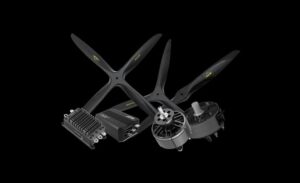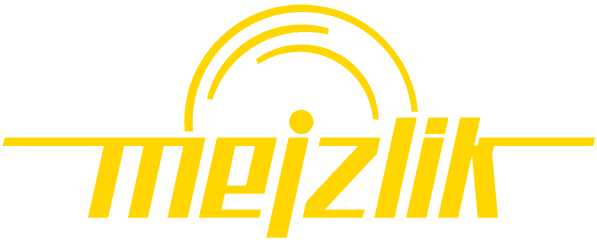 Mejzlik Propellers has released the following article outlining the advantages of selecting individual components such as propellers for a new multirotor UAV (unmanned aerial vehicle) design, compared to an off-the-shelf standard combination of products.
Mejzlik Propellers has released the following article outlining the advantages of selecting individual components such as propellers for a new multirotor UAV (unmanned aerial vehicle) design, compared to an off-the-shelf standard combination of products.
When designing a new drone, it can be extremely convenient to pick an off-the-shelf combination of propulsion components such as motors, electronic speed controllers (ESCs) and propellers provided by leading manufacturers. Data for all the components is generally easily available, they have been proven to work with one another, and the subsequent power requirements are easily calculated.
However, as the multirotor UAV market becomes more competitive, many designers are now switching to individual suppliers for motors, electronic speed controllers and propellers. This article outlines some of the reasons for the change in trend.
Utilising components to their full potential
One solution can never be a perfect fit for all drones. General combinations of propulsion components are usually optimised for general usage and thus will not be fully optimised for most drone designs. Using individual components allows designers to make adjustments to increase flight time, reduce noise, and affect other parameters.
Expert troubleshooting
Over time, many components will face issues, such as ESCs overheating, motors getting clogged with dust, and propellers delaminating due to sunlight. The easiest way to deal with these problems is to have a reliable partner on hand, and companies who focus on one core competency are more likely to have the required experience to solve any issues.
Certification and compliance for UAV platforms
UAVs that perform operations such as flight near people or that fly in countries with strict legislation will typically need to obtain some form of certification. Following standards such as those set by the FAA, EASA or NASA will be made easier by working with good suppliers, who can fit the procedures laid out in quality management system requirements and who will go the extra mile to fulfil the demanding criteria and test components to their absolute maximum.
Competition in the UAV components market segment
As the UAV market segment expands there will be many new companies entering the component business. Many companies already have a UAV division as an addition to their standard operations – for example, an electric motor manufacturer whose core business is to deliver motors for medical components may decide to create a dedicated multirotor UAV manufacturing division. This medical motor company, which makes hundreds of thousands of motors every year and is being strictly regulated by the medical industry with very strong R&D and testing facilities, will have vastly more experience compared to a fairly young company that outsources production of a few thousands of motors each year.
Custom capabilities
Most companies that provide the aforementioned off-the-shelf packages do not manufacture all of their components under one roof, and thus designers who require something slightly different to the standard may face a problem. It may be difficult to obtain custom features such as higher-current ESCs or high-altitude propellers in a reasonable amount of time.
Mejzlik Propellers wrote this article in order to address the common questions: “Why should I switch this propeller from company XYZ to your off the shelf propeller? What more will I get from your propeller?” We provide solutions and support that allow drone OEMs to stay ahead of the often turbulent UAV market.










